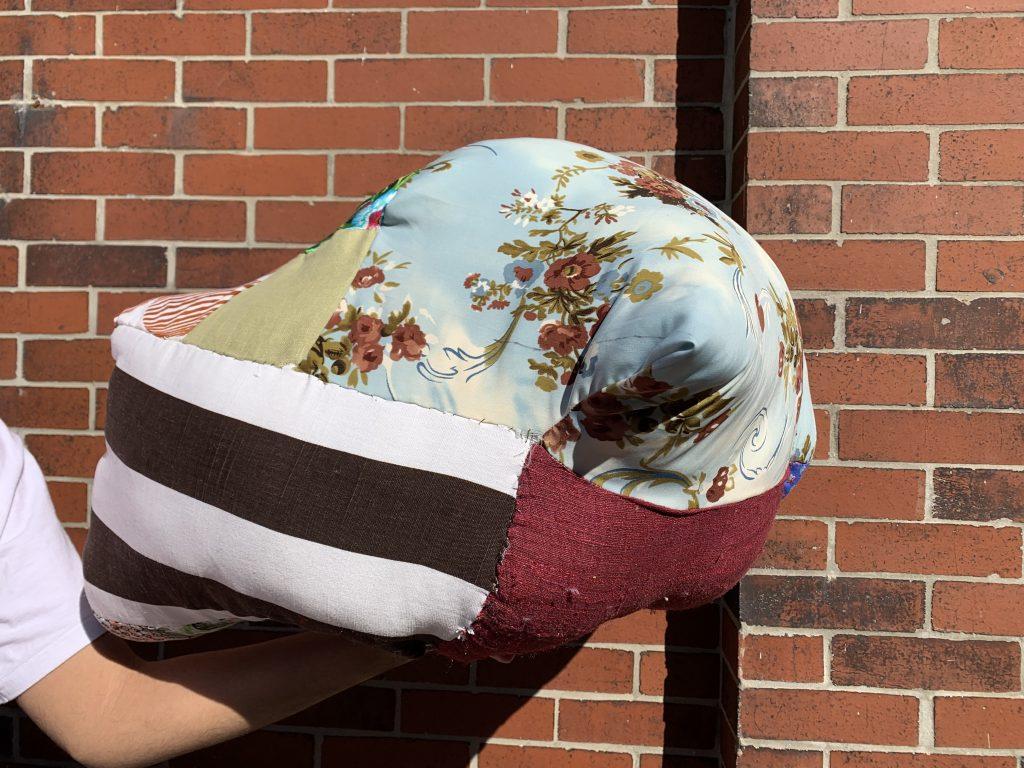My first object was probably the most fundamental. I made my own beachball sphere pattern and used a unique material for each piece. This was a method that was effective in modifying the primary form of the sphere as each material had different properties of how they would respond to the stitching and filling. For example, the felt looks full and comfortable while the shiny pink fabric has almost become concaved and refuses to bulge with the polyfill. The white material was a poor decision in the end because it doesn’t hold up well to tension and has been ripping up like a cotton ball. The cone on the top was left unfilled for me to see how it would retain its shape, or to see the character it expresses with its freedom.
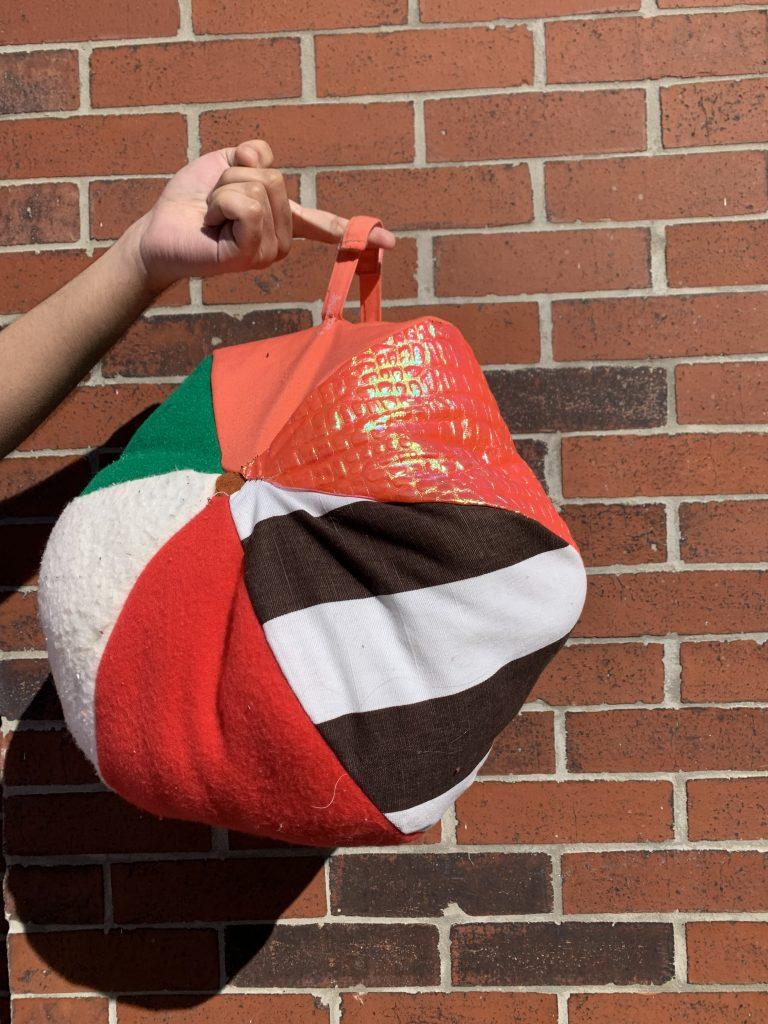
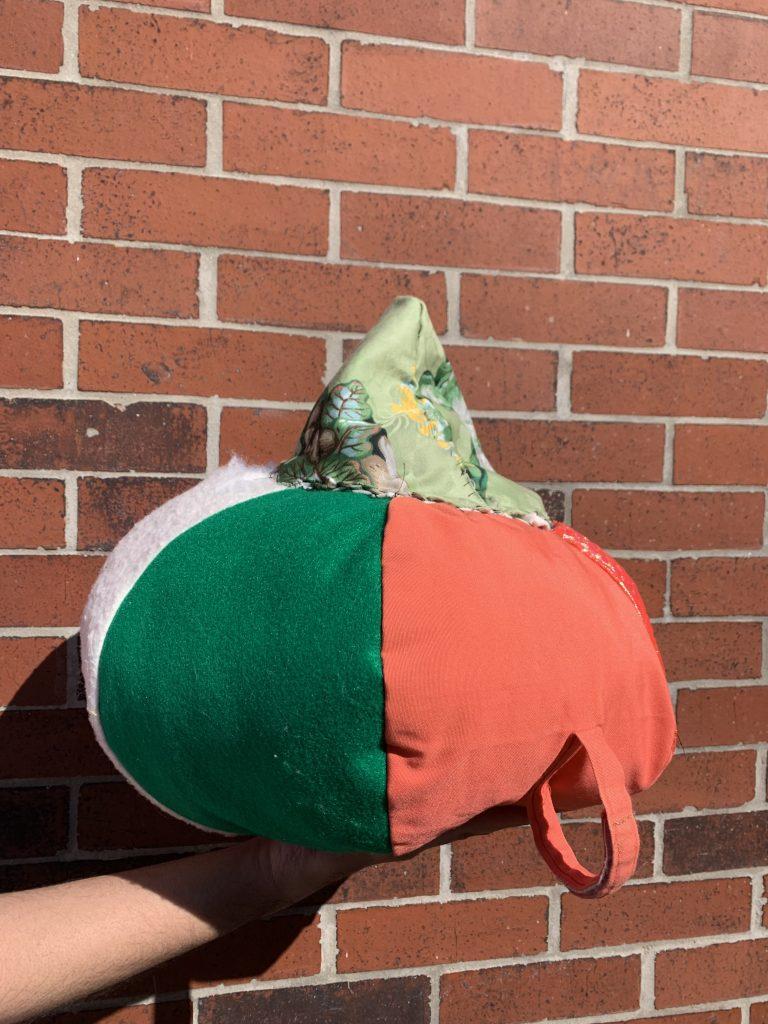
For my second inflatable, I took inspiration from other students who were showcasing ideas of handles or linking parts on their inflatables. This made me think how I can make an inflatable, and then use that inflatable as a building block material. In this case, I took a very long cylindrical shape and used it to twist and tie up the final form. Inspiration here came from pretzels and proteins in the human body. Challenges with this one were the tension that was created when using the cylinders to tie themselves, they are massive and quite the resistance to being braided. Also, stuffing an extremely long cylinder is difficult because felt cannot easily be pushed down to the bottom as you go, so I had to employ a technique where I only slowly turned the fabric inside out only enough so I could shove some polyfil down the barrel. This took about 15 increments of polyfil-ling per cylinder.
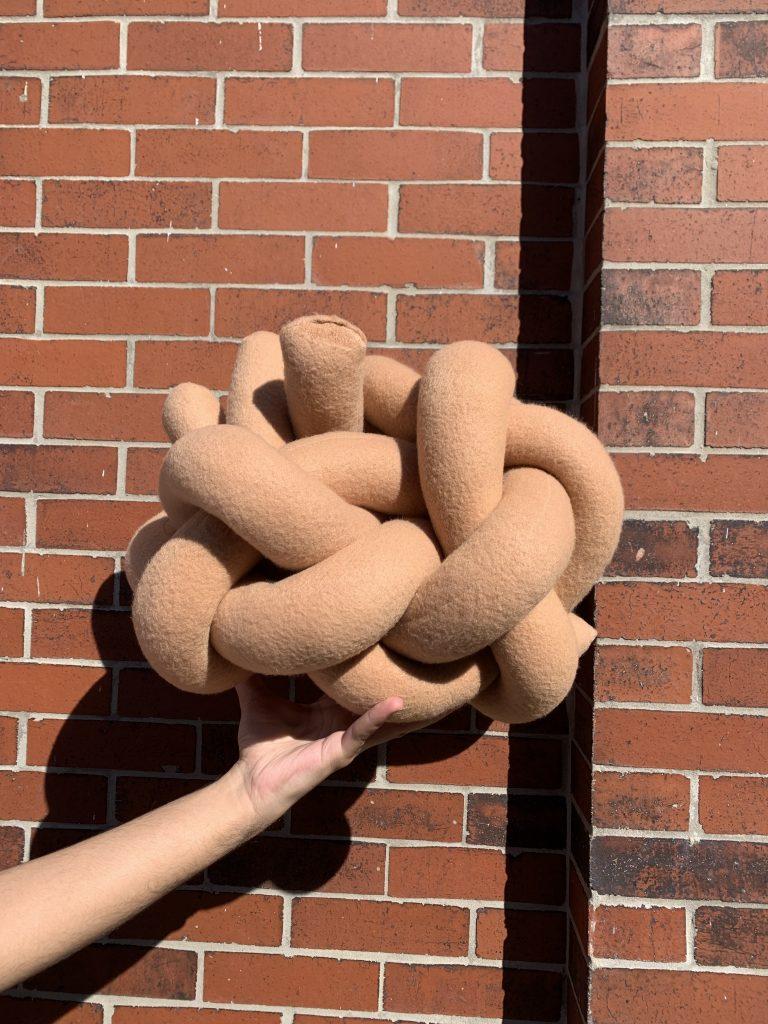
This inflatable was that which I designed in Rhino and laser cut. I decided to create a shape using three modifying primary forms to create a troll like body with a nose and hair. The trapezoidal pyramid body was the easiest to understand after the laser cutting as the edges were pretty square but I had difficulty with the cylindrical nose and the conical hair. The nose was a bit difficult only because of the small size and the need to do a circular stitch on such a small circumference. The hair was extremely difficult because I applied so many modifications on the angles of the cone that the pieces were small and connecting in very irregular ways to create a double twisted (or so it was intended) hairdo. I enjoy the material I used for this inflatable because it agrees with the woodland create theme that is the troll.
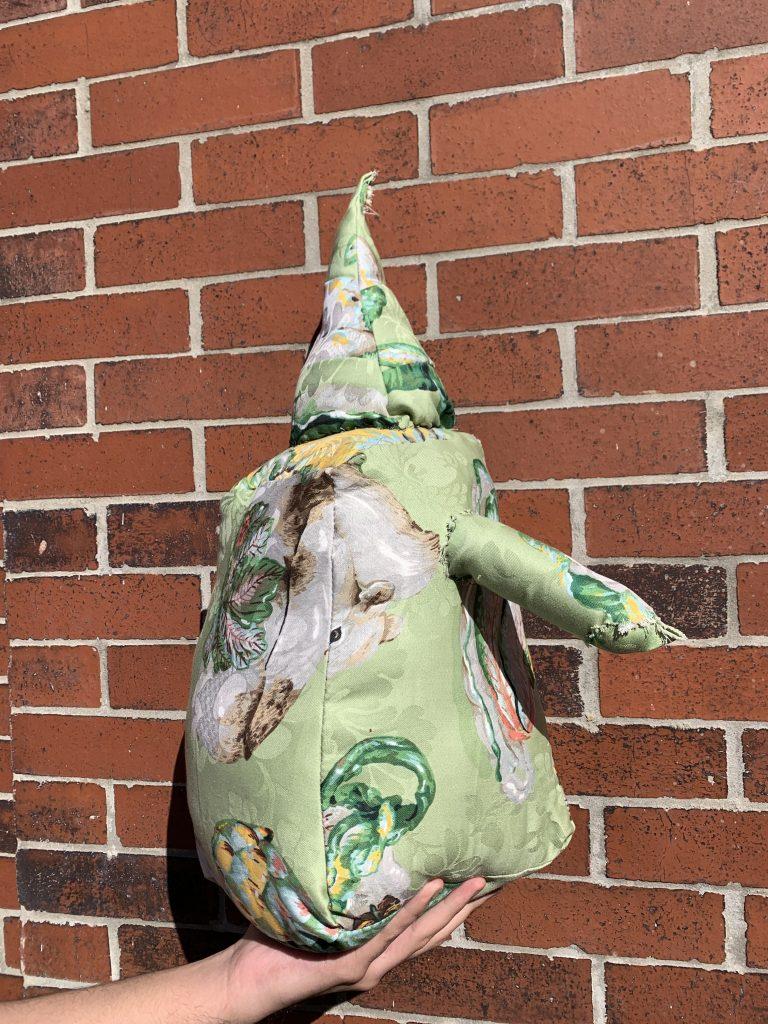
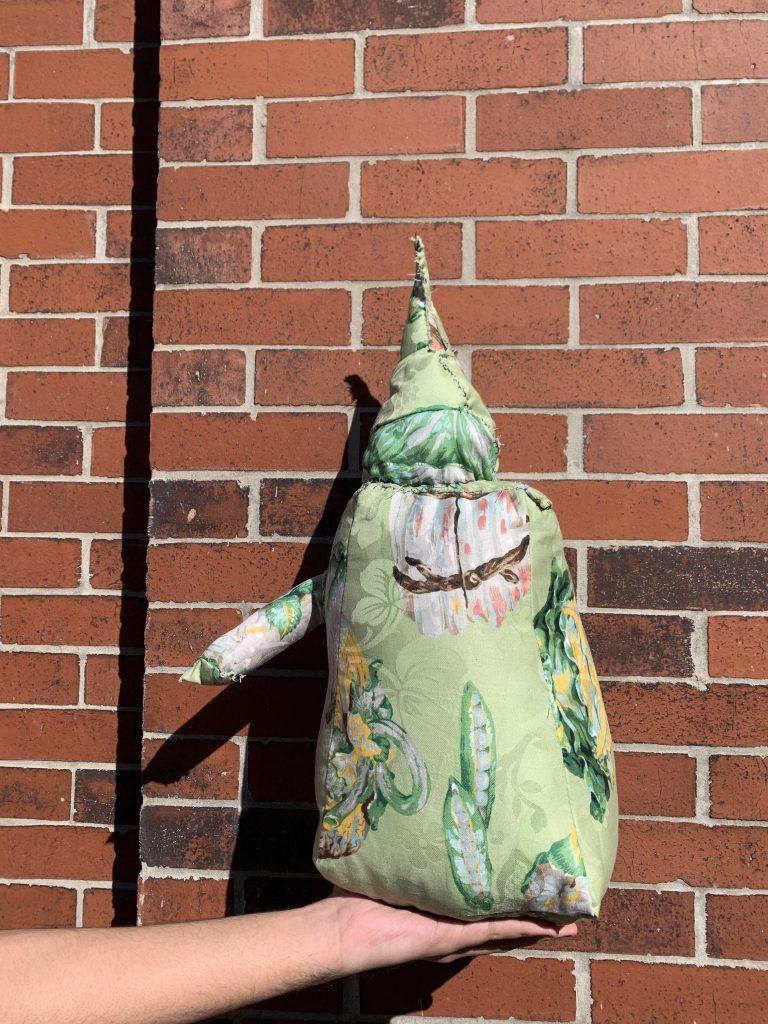
My last inflatable was very fun and I am currently using it as a pillow while writing this blog post. What began as my desire to create my own fabric for an inflatable by quilting together a jumble of scraps turned into this experimental piece. I decided what if I just sew all my fabrics together into a rough rectangular sewing pattern while additions and subtractions here and there. Then I took this pattern and started sewing edges together in an unexpected way. About halfway through the sewing, I took two strips of fabric that after sizing up the inflatable I realized would be much smaller than the final shapes breadth and sewed them to opposing inside walls. This is where the divot and bumpiness come from in this shape, the tension that is created by the inside sewn strands that inhibit the inflatable to be its ideal bursting full, rounded shape.

